The Huawei P30 & P30 Pro Reviews: Photography Enhanced
by Andrei Frumusanu on April 18, 2019 9:00 AM EST- Posted in
- Mobile
- Smartphones
- Huawei
- P30
- P30 Pro
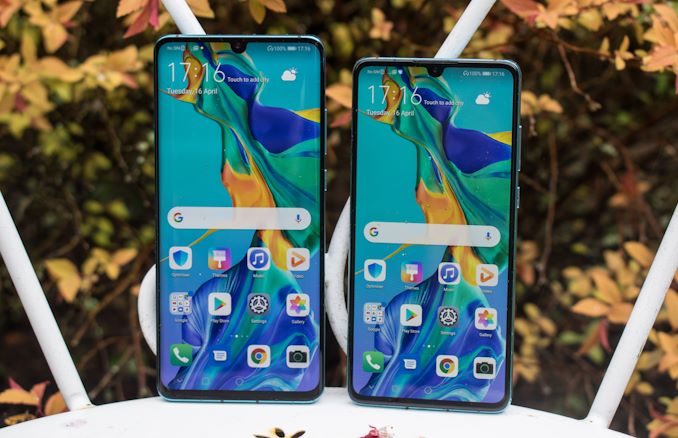
The last year has been extremely exciting period for Huawei and its products: Starting with the P20, the company’s flagships have been truly transformative in terms of their camera photography capabilities. The P20 and P20 Pro last year were extremely intriguing products for the industry, as they ushered in the first step towards an ever more prevalent aspect of modern cameras: computational photography.
Huawei had pioneered the technique to bring new innovative use-cases such as the introduction of multi-frame combination mechanism for low-light capture (a.k.a. Night Mode), which really raised the bar and lead the way in terms of what we expect smartphone cameras be capable of in low light. Huawei didn’t only innovate in terms of software, but also using quite exotic hardware camera sensors, such as the 40MP units in the P20 Pro and the Mate 20 Pro.
This year, Huawei doubled down on the photography aspects of its predecessors with the introduction of the new P30 and P30 Pro. The two new flagships pick up where the P20s left off, and provide yet again a new set of generational improvements to the camera setups. This year, along with software optimisations, we yet again see big changes in the hardware of the cameras, with the introduction of an industry first RYYB 40MP main camera sensor, as well as the addition of an even more exotic 5x telephoto camera module that is enabled via a prism mirror and a 90° sensor layout.
Naturally, the P30 and P30 Pro also bring overall improvements and redesigns in the other aspects of what makes them flagship smartphones, with larger batteries, new screens, and overall design revamps. Let’s dive into the specs:
| Huawei P30 Series | ||||
| P30 | P30 Pro | |||
| SoC | HiSilicon Kirin 980 2x Cortex-A76 @ 2.60 GHz 2x Cortex-A76 @ 1.92 GHz 4x Cortex-A55 @ 1.80 GHz |
|||
| GPU | Mali G76MP10 @ 720MHz | |||
| DRAM | 6/8GB LPDDR4X | 8GB LPDDR4X | ||
| Display | 6.1" OLED 2340 x 1080 |
6.47" OLED 2340 x 1080 |
||
| Size | Height | 149.1 mm | 158.0 mm | |
| Width | 71.36 mm | 73.4 mm | ||
| Depth | 7.57 mm | 8.41 mm | ||
| Weight | 165 grams | 192 grams | ||
| Battery Capacity | 3550mAh Rated 3650mAh Typical |
4100mAh Rated 4200mAh Typical |
||
| Wireless Charging | - | Qi | ||
| Rear Cameras | ||||
| Main | 40MP f/1.8 RYYB sensor 27mm equiv. FL |
40MP f/1.6 OIS RYYB sensor 27mm equivl. FL |
||
| Telephoto | 8MP f/2.4 3x Optical zoom 80mm equiv. FL |
8MP f/3.4 5x Optical Zoom 135mm equivl. FL |
||
| Wide | 16MP f/2.2 Ulta wide angle 17mm equivl. FL |
20MP f/2.2 Ultra wide angle 16mm equivl. FL |
||
| Extra | - | Time-of-flight sensor | ||
| Front Camera | 32MP f/2.0 | |||
| Storage | 128 / 256 (P30 Pro only) + proprietary "nanoSD" card |
|||
| I/O | USB-C 3.5mm headphone jack |
USB-C | ||
| Wireless (local) | 802.11ac Wave 2 Wi-Fi Bluetooth 5.0 LE + NFC |
|||
| Cellular | Kirin 980 Integrated LTE (Category 21/18) DL = 1400 Mbps 4x4 MIMO 3x20MHz CA, 256-QAM (5CA no MIMO) UL = 200 Mbps 2x2 MIMO 1x20MHz CA, 256-QAM |
|||
| Splash, Water, Dust Resistance | IP53 (no water resistance) |
IP68 (water resistant up to 1m) |
||
| Dual-SIM | 2x nano-SIM | |||
| Launch Price | 6+128 GB: 749€ | 8+128 GB: 999€ 8+256 GB: 1099€ |
||
Both the P30 and P30 Pro are powered by HiSilicon’s Kirin 980 chipset. By now the 7nm SoC should be familiar with most of our readers, as we had an in-depth review of the silicon in the review of the Mate 20 and Mate 20 Pro. The combination of Arm’s Cortex A76 CPU cores in the new 7nm manufacturing node made for some impressive generational gains, with the new chipset’s CPUs still tracking ahead of the new generation competition such as the Snapdragon 855 or the Exynos 9820. GPU performance, while not as leading as the competition, is still adequately competitive.
Versus the Mate 20’s, the P30’s increase the amount of DRAM available. The P30 sees 6GB of RAM while the P30 Pro comes with 8GB of LPDDR4X. Both models come with 128GB of base capacity NAND storage.
Like the P20s before, the P30s this year differ in terms of their form-factor. The P30 Pro is the larger sibling in a 73.4mm wide form-factor, while the P30 is smaller with 71.36mm width. The screen sizes are respectively 6.47” and 6.1”, however with the screen aspect ratios in the last few years becoming more elongated as well as bezels shrinking, it’s no longer a very representative way to describe phone form-factors.
The P30 Pro comes with a 4200mAh battery while the smaller P30 sports a 3650mAh unit. It’s again to be noted that the actual design capacities here are 100mAh less, a quite annoying development in recent years in how manufacturers advertise their battery capacities.
At the centre of the P-series (which apparently stands for Photography) is of course the camera, or better said, the cameras. While on the P20s we saw different camera sensors between the smaller and bigger Pro models, the P30s both come with the same new 40MP sensor. The new module manufactured by Sony is the first of its kind in a commercial smartphone by employing a new RYYB colour filter structure, as opposed to the classical RGGB Bayer filter. Replacing the green subpixel with a yellow one promises to increase light sensitivity by 30%. In the past we’ve seen attempts with RGBW sensors, however they’ve all ended up in failure and never saw wide adoption. Huawei here promises a better implementation as it’s able to fully take advantage of the RYYB filter structure from sensor to SoC ISP without having to reconvert the data-stream to a regular Bayer stream, something which currently would be unique in the space.
The 40MP main sensor on the P30 comes in an f/1.8 aperture lens module, while the P30 Pro uses a wider f/1.6 lens. Furthermore the P30 Pro also employs OIS on the main sensor, something that’s been notoriously lacking in Huawei smartphones in the last couple of years.
Both P30s have wide-angle modules, and much like on the Mate 20’s these two differ in terms of their sensors. The P30 uses a 16MP f/2.2 unit with a 17mm equivalent focal length, while the P30 Pro has a 20MP f/2.2 unit with a slightly wider 16mm equivalent focal length. Huawei introduced the wide-angle sensors on the Mate 20 and Mate 20 Pro and they’ve been fantastic additions to the camera setups.
Finally, Huawei raised the bar in terms of zoom/telephoto module capability. The new P30 contains a similar 8MP f/2.4 3x / 80mm equivalent module as on the P20 Pro and the Mate 20 Pro, so there’s not apparent chance here in terms of the paper specifications.
The P30 Pro on the other hand has a special new telephoto/zoom module, reaching an optical magnification factor of 5x, or a 135mm equivalent focal length. Usually such higher magnification factors weren’t available in smartphones due to limitations on the camera module thickness; you either had to have a very large bump, or you had to employ a tiny sensor. Huawei here does neither, and instead is positioning the camera sensor at a 90° perpendicular position. This was achieved through a prism mirror. The drawback of this system is that the aperture is quite limited at only f/3.4, which should result in less light.
Finally, the P30 Pro comes with a ToF sensor, however much like on the Honor View20 we reviewed in January, it’s of extremely limited use.
The P30s, much like the P20s, are distinguished by their vertical camera setups on the upper side of the phones. Again, both phones maintain the form-factor of their predecessors, however the P30 Pro does get notably longer than the P20 Pro.
P30 Design
The P30s, much like the P20s, are distinguished by their vertical camera setups on the upper side of the phones. Again, both phones maintain the form-factor of their predecessors, however the P30 Pro does get notably longer than the P20 Pro.
For both the P30 and P30 Pro, the front is now distinguished by a dew-drop notch design in an otherwise near bezel-less smartphone. Huawei was able to minimise the front plastic rim between display and metal frame, and was able to completely get rid of it on the back glass panel, which now is slightly curved and flowing to the sides.
On the bottom of the phone we find the main speaker grill as well as a 3.5mm headphone jack.
The top merely has a microphone hole and is otherwise bare. What is odd of the new P30 design is the flat top and bottom frames – I don’t think I remember of any smartphone ever employing such a design. It’s not really hindering in any way, but it is quite odd in terms of feel and contrary to what one is used to in a smartphone.
The right side sees both the power button as well as the volume rocker button. Placement is identical to the P20 and it’s a good design for a phone of this size. The left side sees the nanoSIM+Nanomemory slot.
P30 Pro Design
The P30 Pro’s design differs a lot more from its predecessor. Here the new P30 Pro is a lot more akin to the Mate 20 Pro than the P20 Pro, sharing the same curved screen and back glass design. The screen design, besides the curved edges, is identical in design with the P30, sharing the same dew-drop notch design for the camera.
What is different though and not immediately visible is that the P30 Pro doesn’t actually have an ear-piece speaker. Huawei instead opted for a piezoelectric actuator speaker integrated into the screen. I’m not too convinced of this implementation as first of all it doesn’t serve as a stereo speaker (Unlike the G8’s integrated display speaker), and second of all I fail to see the value as it also produces lesser quality call audio.
Because the phone is curved both on the front and back, there’s no space for a tray on the sides of the phone. Like on the Mate 20 Pro, the SIM tray is found on the bottom side. Also, unfortunately like on the Mate 20 Pro, Huawei opted to leave out the 3.5mm headphone jack on the more expensive model. Again I frankly find this stupid that the company would opt to leave out a feature on the higher-end model.
The top of the phone is similar to the P30, however we see the addition of an IR transceiver.
The edges of the P30 Pro flow seamlessly on the sides, giving an almost identical feel to the Mate 20 Pro. I actually love this design as it’s simply vastly more ergonomic, and it makes the larger phone feel much smaller than it really is. Build quality, like on the Mate 20 Pro, is also excellent.
If I had one gripe about the design of the P30s, it’s their weight. Particularly the 192g of the Mate 20 Pro is very heavy and on the top-end of the scale, without even being the biggest phone around. The P30 Pro offers an IP68 rating, while the P30 offers a regular IP53 rating.



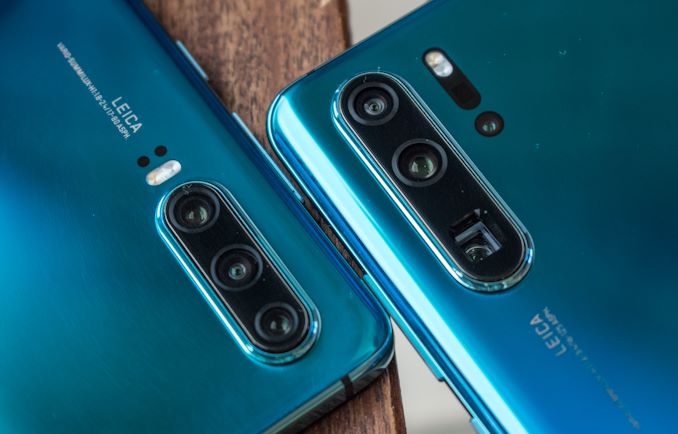

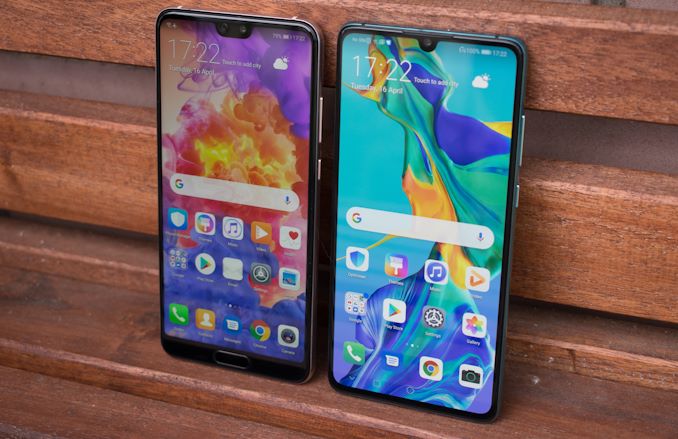
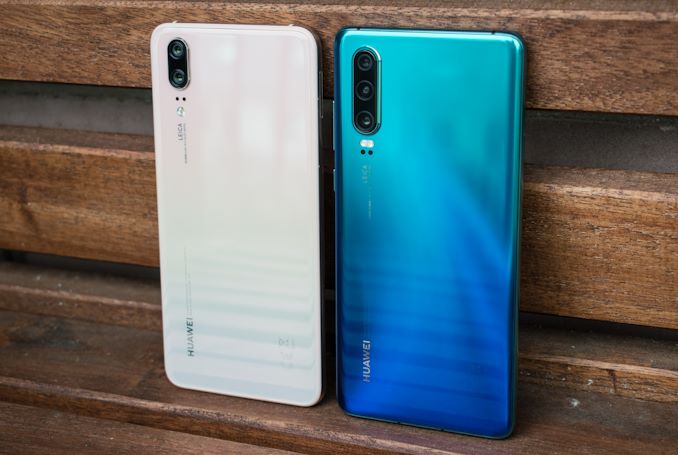

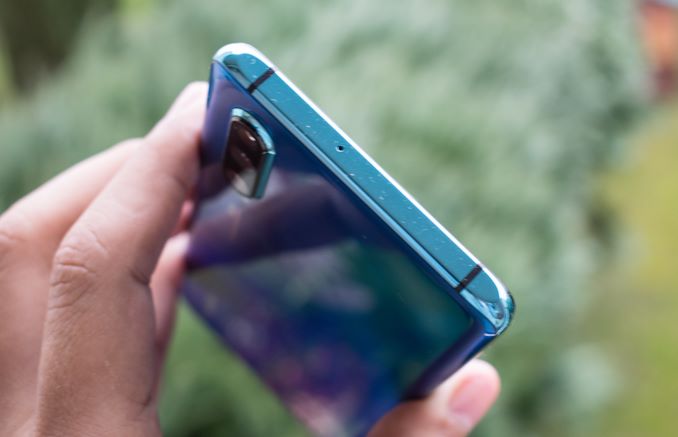
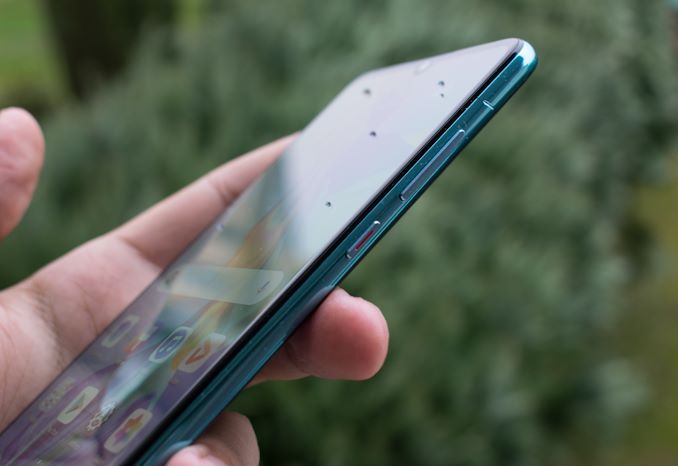
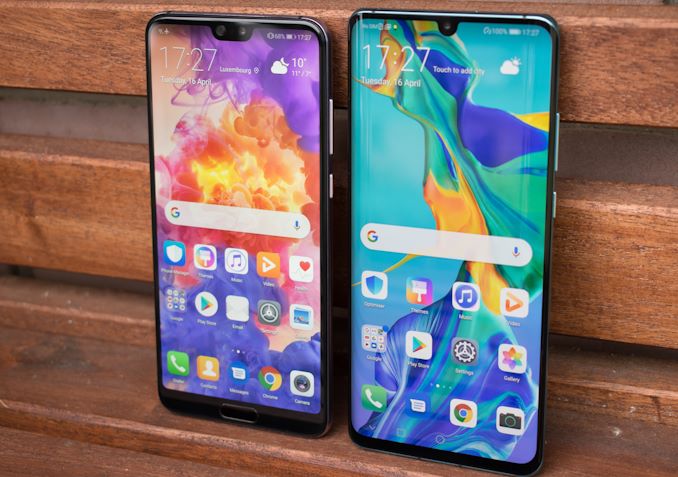
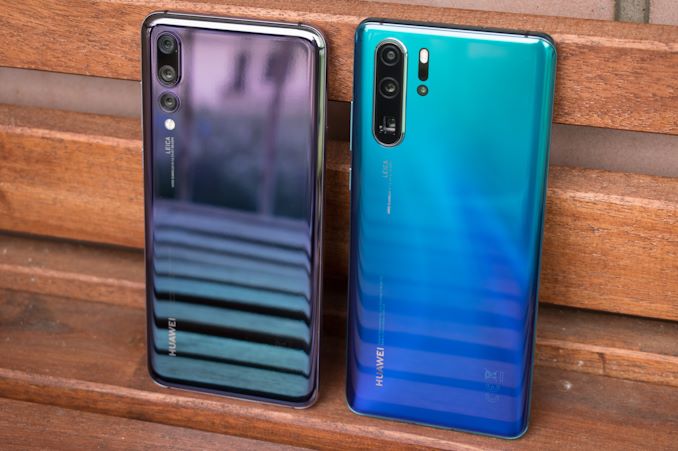

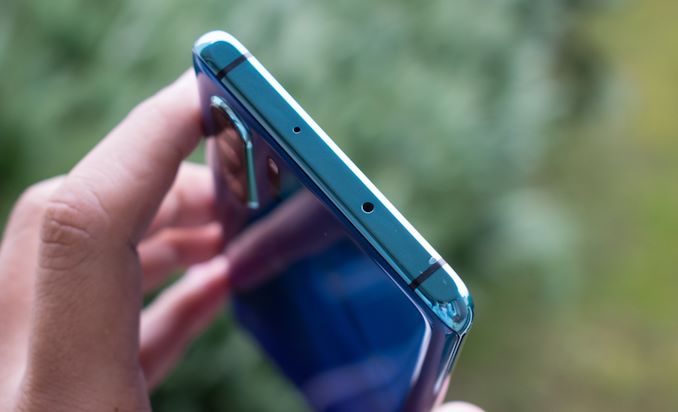
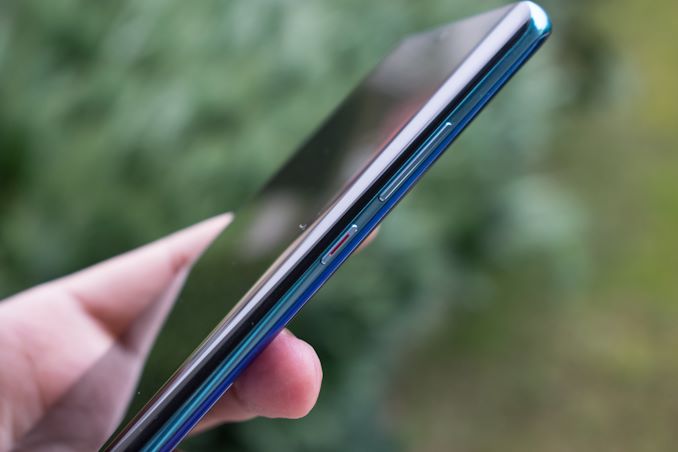








85 Comments
View All Comments
hawkie - Friday, April 19, 2019 - link
So advanced and yet still unable to adjust notifications volume separate from ringing volume.s.yu - Friday, April 19, 2019 - link
I know that the volume control of some apps are just broken, for example Wechat will destroy your hearing passing the ringtone through the earphones at maximum volume if somebody calls using the VoIP function while you're wearing IEMs listening to music. This app probably has a billion users, it's ****ing ridiculous and extremely annoying.amosbatto - Friday, April 19, 2019 - link
Let's see whether the P30 and P30 Pro pass my standard for what is important in a smartphone:1. Removable battery: No.
1A. If not removable, how hard is it to crack open the case to replace the battery:
Pretty hard. iFixit gives the P30 Pro a repairability score of 4/10. It is very hard to pry open the case without breaking the glass back. In other words you are probably going to throw away this device after 2-3 years when the battery is degraded.
2. How well will it survive drops? Probably not well.
2A. How hard is it to replace the screen and the glass back panel if broken? Hard and expensive.
3. MicroSD slot for memory expansion: No. It has expensive proprietary memory.
4. Can I root the phone? No
5. Can I unlock the bootloader? No
6. Can I install LineageOS? Never. All info on the Kirin SoC is proprietary.
7. How long will Huawei offer updates? 24 months with updates every 2 months, which is decent for Android, but not as good as the Pixel 2 and 3 which will get 3 years of updates or Apple which is 4-5 years.
In other words, I can only expect to use the P30/P30 Pro for 2 years and I can only do what Huawei wants me to do with the phone. I'll pass. Strange how little attention Anandtech pays to these issues in its reviews.
I am now so fed up with the mobile industry, that I preordered the Purism Librem 5, because at least Purism respects my rights as a user.
Andrei Frumusanu - Friday, April 19, 2019 - link
> 4. Can I root the phone? No> 5. Can I unlock the bootloader? No
> 6. Can I install LineageOS? Never. All info on the Kirin SoC is proprietary.
> Strange how little attention Anandtech pays to these issues in its reviews.
Speaking as somebody who used to compile his own kernels on his smartphones; it doesn't matter. I don't even root nowdays. The vast majority of readers will not, and I say that they should not care about these things. There is simply no benefit to the user experience.
> It is very hard to pry open the case without breaking the glass back.
I've opened plenty of glass back phones and replaced the batteries, it's not terribly hard. The glass backs are also a lot tougher than you think.
> 2A. How hard is it to replace the screen and the glass back panel if broken? Hard and expensive.
Glass back is very easy. Screen is something that no phone of the last few years will be easy to replace anymore.
> 7. How long will Huawei offer updates? 24 months with updates every 2 months, which is decent for Android, but not as good as the Pixel 2 and 3 which will get 3 years of updates or Apple which is 4-5 years.
Fair enough and true. All Android vendors do lag behind Apple.
Quantumz0d - Friday, April 19, 2019 - link
>The vast majority of readers will not, and I say that they should not care about these things. There is simply no benefit to the user experience.Wrong, I've seen so many people commenting on the articles here about the Bootloader unlock for Huawei phones specially and also how the Android is devolving with killing hidden APIs to disable all developer powerful programming skills, for instance Devcheck by Elemental X dev needed to go full Root else the app wont work. Nova Launcher needs root for D2W functionality.
Draw over other apps is dead, Clipboard access is dead officially, and so many other ton of restrictions how about you read up on Scoped Storage mentioned here by a hardcore Android Developer on the Google's intent on dumbing down Android ?
https://commonsware.com/blog/2019/03/28/death-exte...
https://issuetracker.google.com/issues/128591846
Anandtech technical insight "write-ups" are not some YouTube mainstream pleb "talk" instead they focus on extremely geeky stuff. This is exactly what power users care for. As an XDA member every thread there focuses on EAS and other kernel optimizations which go perfectly in line with the AT pieces done by you and Matt.
Root users are less indeed and it's becoming more scarce that doesn't mean you can write off that part entirely. Android by it's right uses GNU GPL V2 and the abusers like MediaTek are left in a dumpster oblivion without a lending hand to make the software patching for the end users like how the community does it for *FREE* when the OEM abandons them and how Qcomm CAF contributed which made them so popular and welcoming for the developers, Running RR 7.1.2 with latest patch thanks to community else that OS was outdated and left in dust.
And I have an LG V30S as well go to WTF thread on XDA and see how many people root that phone, that's not even a OnePlus or Xiaomi phone which are mostly customization centric and root friendly devices. And LG screwed up the DTS X patch in their Official Software update for US998, and guess what ? Community helped it by modifying the Build.prop with ROOT and enable that functionality. Same goes for the G7 EQ app on the V30, with Magisk. So this is not user experience ? and the ESS HiFi mode as well. All this is for one phone.
I think you underestimate AT readers with normal Mainstream people. Sad
Andrei Frumusanu - Saturday, April 20, 2019 - link
> Wrong, I've seen so many people commenting on the articles hereThat's just a loud minority, you have a warped view of general users.
> Anandtech technical insight "write-ups" are not some YouTube mainstream pleb "talk" instead they focus on extremely geeky stuff. This is exactly what power users care for.
Deep-dives such as on Apple's SoCs and µarch are not for power users, they're for the technically curious. There is overlap in this audience, but you're overestimating it.
> Android by it's right uses GNU GPL V2 and the abusers like MediaTek are left in a dumpster
*Android* isn't GPL. The kernel is, and MediaTek VENDORS (they have the responsibility) largely adhere to it.
> I think you underestimate AT readers with normal Mainstream people.
I think I have a good view on who most AT readers are, they're not mainstream people, but they're also definitely not persons like yourself.
Quantumz0d - Saturday, April 20, 2019 - link
Okay. I may have overestimated. But that doesn't explicitly give an impression that Root / BL unlock / Custom ROM are completely useless / lacks any UX improvement because there is a fair share of people using Lineage OS (1.73 Million active installs as we speak -> stats.lineageos.org) and quoting AT articles directly at XDA for new devices.Another instance apart from my own device, the MIUI OS it has tons of Ads. How do you block it ? you need root or BL unlock to improve the user experience be it root or flashing another custom ROM OS or the Pixel GCAM mods with Magisk modules without breaking stuff here and there because system app locations and etc are complicated for even an intermediate user when uninstalling or etc.
Rooting is like getting the keys to your castle back and own it and feel responsible, not handling the keys to the corporations and rely on other entities, which most of us enjoy this part doesn't matter just wanted to mention it.
I think, a little mentioning of BL unlock and acknowledging it (for ownership of the HW one paid) doesn't hurt anyone (Idk if it hurts AT from Huawei POV like how Samsung avoided you out for showing the truth, if that's a case then it's an unfortunate situation that consumer is put in dark)
Thanks
jabber - Saturday, April 20, 2019 - link
Yeah rooting is so 2012. I did it back then (Nexus 4 days) and nightly builds and to be honest it was a waste of life.I do not know ANYONE now personally that roots their phone or puts custom builds on it. Just not worth the effort.
It's only important to a small minority on tech forums. Unfortunately, those kind of people have little perspective of 'normal life' and 'normal people'.
BabelHuber - Monday, April 22, 2019 - link
I think you are confusing rooting with "permanently messing with a device" 😎Also for me the days of custom ROMs and nightlies are over, but I still have a rooted Pixel 2 XL and could hardly use it without root, even though I am on the stock ROM.
The blinding white UI of Android 5 to Android 9 I couldn't stand, so I painted it black with Substratum for years. Night and day difference for me.
My phone had a multitouch bug for months, but there was a Magisk module to fix this.
Google switched off Pixel 3 camera features which my phone is perfectly capable to handle (they gradually added them, though). No need to mess around with hacked Google cameras, a simple build.prop change fixed this.
System-wide add blocking FTW!
So each month I apply the new patch now, then I flash TWRP and Magisk. Afterwards, it's Substratum's time to turn everything black again. Finally, I activate the ad blocker again and quickly change some values in the build.prop.
This is 20 minutes of time every month, and I think it's well spent.
Andrei Frumusanu - Tuesday, April 23, 2019 - link
Everything you mention Samsung had for years, out of the box, without root.